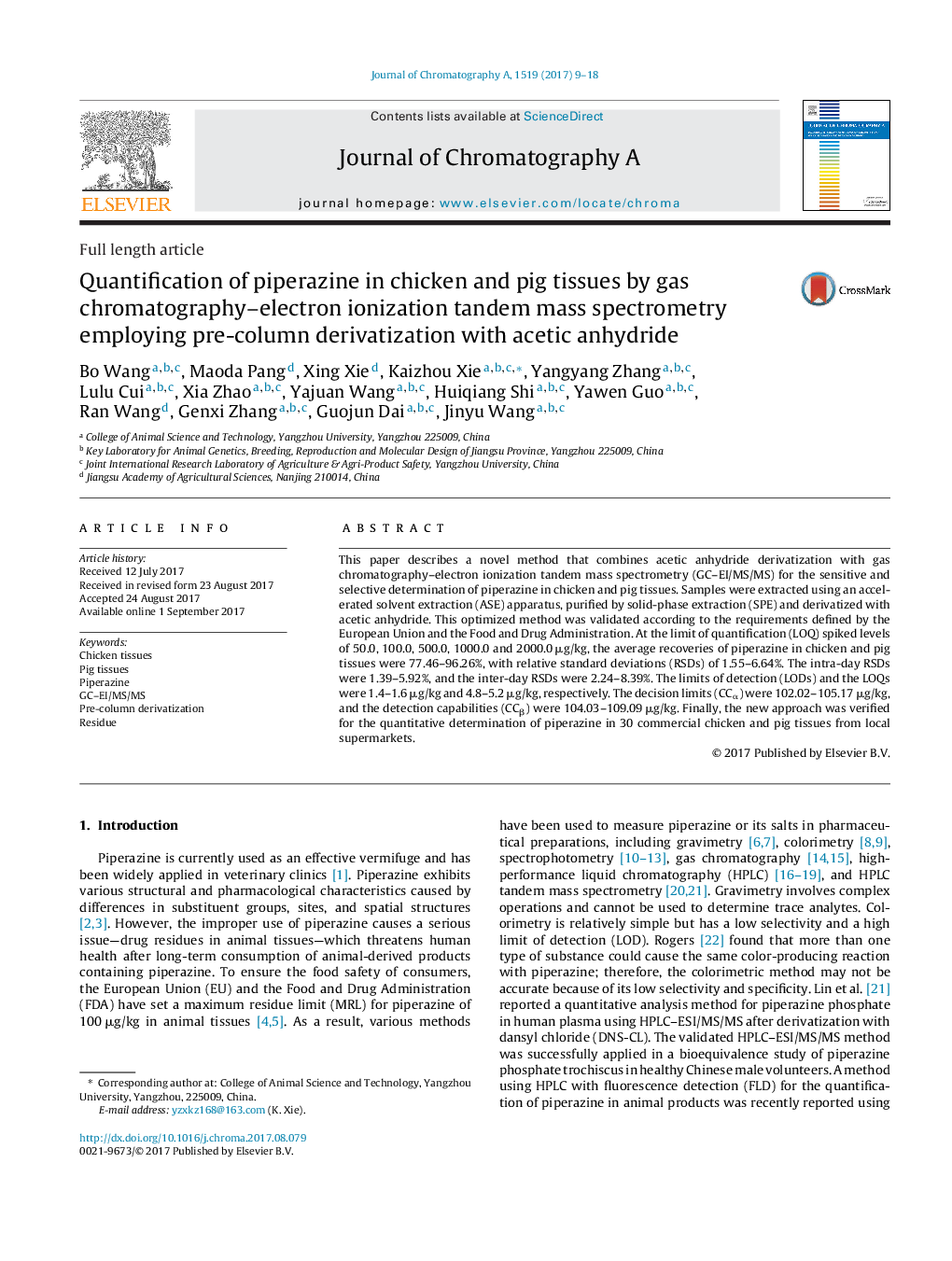| Article ID | Journal | Published Year | Pages | File Type |
|---|---|---|---|---|
| 5134955 | Journal of Chromatography A | 2017 | 10 Pages |
â¢Piperazine derivatization was monitored and determined by GC-EI/MS/MS.â¢A new method for the detection of piperazine residues in chicken and pig tissues is presented.â¢The method is accurate, rapid and highly sensitive.â¢The method provides reliable accuracy for the determination of piperazine.
This paper describes a novel method that combines acetic anhydride derivatization with gas chromatography-electron ionization tandem mass spectrometry (GC-EI/MS/MS) for the sensitive and selective determination of piperazine in chicken and pig tissues. Samples were extracted using an accelerated solvent extraction (ASE) apparatus, purified by solid-phase extraction (SPE) and derivatized with acetic anhydride. This optimized method was validated according to the requirements defined by the European Union and the Food and Drug Administration. At the limit of quantification (LOQ) spiked levels of 50.0, 100.0, 500.0, 1000.0 and 2000.0 μg/kg, the average recoveries of piperazine in chicken and pig tissues were 77.46-96.26%, with relative standard deviations (RSDs) of 1.55-6.64%. The intra-day RSDs were 1.39-5.92%, and the inter-day RSDs were 2.24-8.39%. The limits of detection (LODs) and the LOQs were 1.4-1.6 μg/kg and 4.8-5.2 μg/kg, respectively. The decision limits (CCα) were 102.02-105.17 μg/kg, and the detection capabilities (CCβ) were 104.03-109.09 μg/kg. Finally, the new approach was verified for the quantitative determination of piperazine in 30 commercial chicken and pig tissues from local supermarkets.
